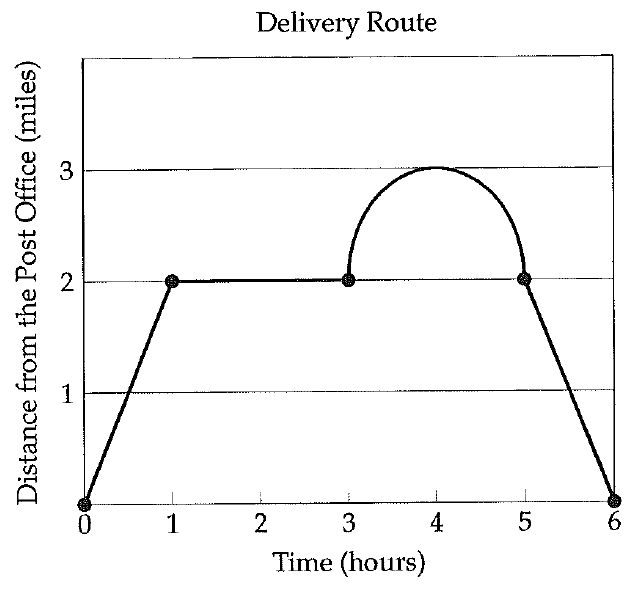PARTIAL DERIVATIVE OF A FUNCTION OF TWO VARIABLES
When we find partial derivative of F with respect to x, we treat the y variable as a constant and find derivative with respect to x .
That is, except for the variable with respect to which we find partial derivative, all other variables are treated as constants. That is why we call them as “partial derivative”.
If F has a partial derivative with respect to x at every point of A , then we say that (∂F/∂x) (x, y) exists on A.
Note that in this case (∂F/∂x) (x, y) is again a real-valued function defined on A .
Find the partial derivatives of the following functions at the indicated points.
Problem 1 :
f (x, y) = 3x2 − 2xy + y2 + 5x + 2, (2, −5)
Solution :
f (x, y) = 3x2 − 2xy + y2 + 5x + 2
Differentiate with respect to x. Treat y as constant.
∂F/∂x = 3(2x) - 2(1)y + 5(1) + 0
∂F/∂x = 6x-2y+5
∂F/∂x at (2, -5) = 6(2)-2(-5)+5
= 12+10+5
= 27
Differentiate with respect to y. Treat x as constant.
f (x, y) = 3x2 − 2xy + y2 + 5x + 2
∂F/∂y = 0-2x(1)+2y+0+0
∂F/∂y = -2x+2y
∂F/∂y at (2, -5) = -2(2)+2(-5)
= -4-10
= -14
Problem 2 :
g(x, y) = 3x2 + y2 + 5x + 2, (1, −2)
Solution :
g (x, y) = 3x2 + y2 + 5x + 2
Differentiate with respect to x. Treat y as constant.
∂G/∂x = 3(2x) + 0 + 5(1) + 0
∂G/∂x = 6x+5
∂G/∂x at (1, -2) = 6(1)+5
= 11
Differentiate with respect to y. Treat x as constant.
f (x, y) = 3x2 + y2 + 5x + 2
∂G/∂y = 0+2y+0+0
∂G/∂y = 2y
∂G/∂y at (1, -2) = 2(-2)
= -4
Problem 3 :
h(x, y, z) = x sin(xy) + z2x, (2, π/4, 1)
Solution :
h(x, y, z) = x sin(xy) + z2x, (2, π/4, 1)
Differentiate with respect to x. Treat y as constant.
∂H/∂x = x(cosy) + sin(xy) (1) + z2(1)
= 2[cos(π/4)] + sin(2⋅(π/4)) + 12
= 2(1/√2) + sin(π/2) + 1
= √2 + 1 + 1
= 2 + √2
Differentiate with respect to y. Treat x as constant.
f (x, y) = 3x2 + y2 + 5x + 2
∂G/∂y = 0+2y+0+0
∂G/∂y = 2y
∂G/∂y at (1, -2) = 2(-2)
= -4
Problem 4 :
G(x, y) = e(x+3y) log(x2+y2), (-1, 1)
Solution :
Differentiate with respect to x. Treat y as constant.
∂G/∂x = e(x+3y) 1/(x2+y2) (2x) + log(x2+y2) e(x+3y) (1)
= 2xe(x+3y)/(x2+y2) + log(x2+y2) e(x+3y)
= e(x+3y)[2x/(x2+y2)+ log(x2+y2)]
∂G/∂x at (-1, 1) = e(-1+3)[2(-1)/((-1)2+12)+ log((-1)2+12)]
= e2[(-2/2) + log2]
= e2[log 2 - 1]
Differentiate with respect to y. Treat x as constant.
∂G/∂y = e(x+3y) (1/(x2+y2) (2y) + log(x2+y2) e(x+3y) (3)
= 2ye(x+3y)/(x2+y2) + 3log(x2+y2) e(x+3y)
∂G/∂y = e(x+3y)[2y/(x2+y2)+3log(x2+y2)]
∂G/∂y at (-1, 1) = e(-1+3(1))[2(1)/((-1)2+12)+3log((-1)2+12)]
= e2[1+3log2]
= e2[1+log23]
= e2[1+log8]

Apart from the stuff given above, if you need any other stuff in math, please use our google custom search here.
Kindly mail your feedback to v4formath@gmail.com
We always appreciate your feedback.
©All rights reserved. onlinemath4all.com
Recent Articles
-
AP Calculus AB Problems with Solutions (Part - 8)
Jan 30, 25 09:48 AM
AP Calculus AB Problems with Solutions (Part - 8) -
SAT Math Resources (Videos, Concepts, Worksheets and More)
Jan 29, 25 06:00 AM
SAT Math Resources (Videos, Concepts, Worksheets and More) -
Digital SAT Math Problems and Solutions (Part - 105)
Jan 29, 25 05:52 AM
Digital SAT Math Problems and Solutions (Part - 105)
